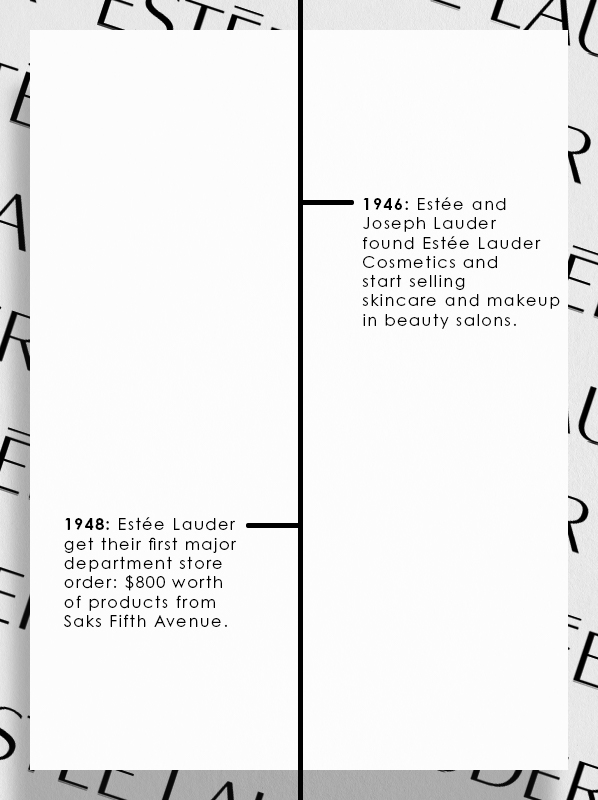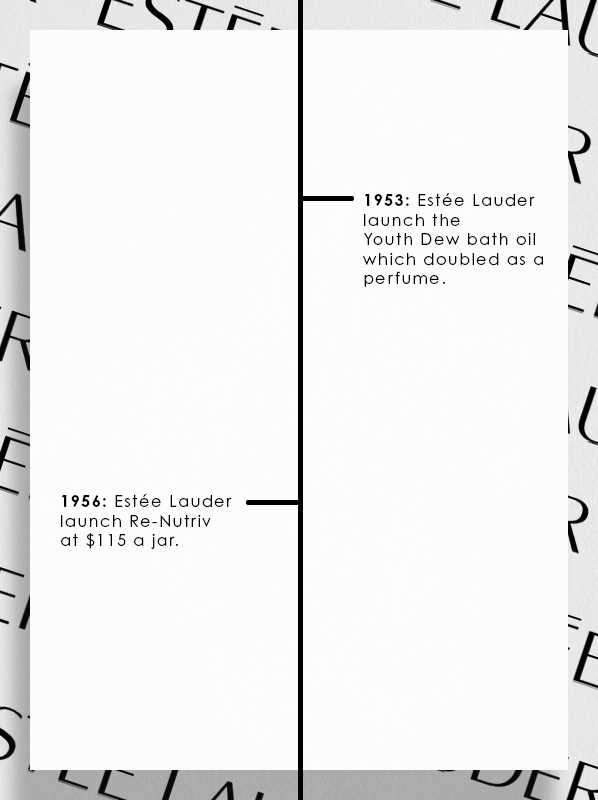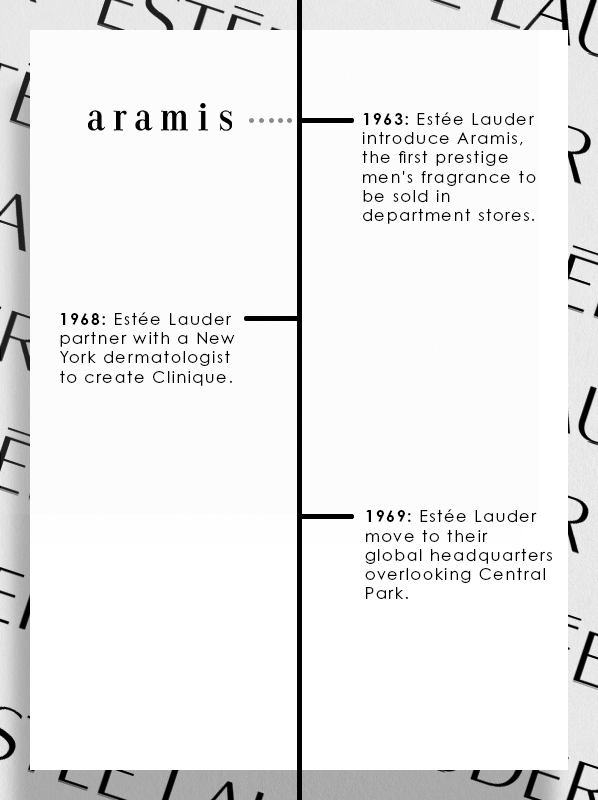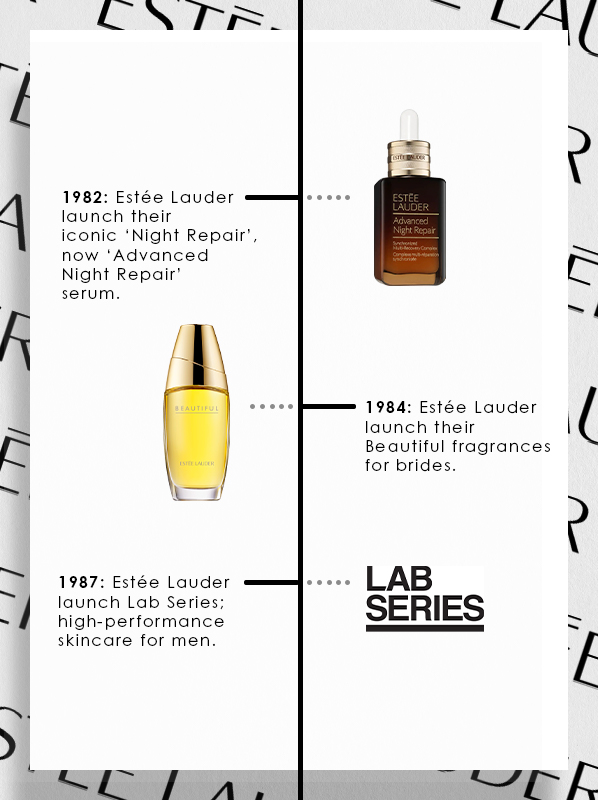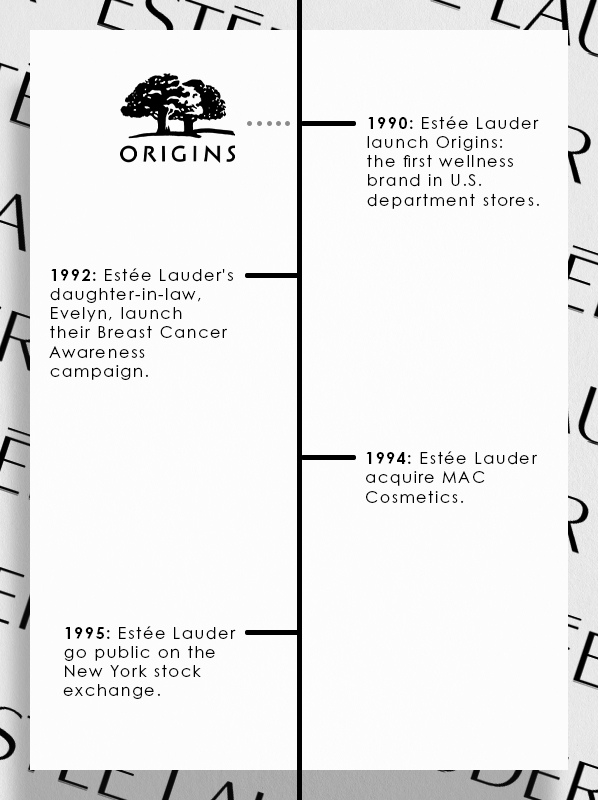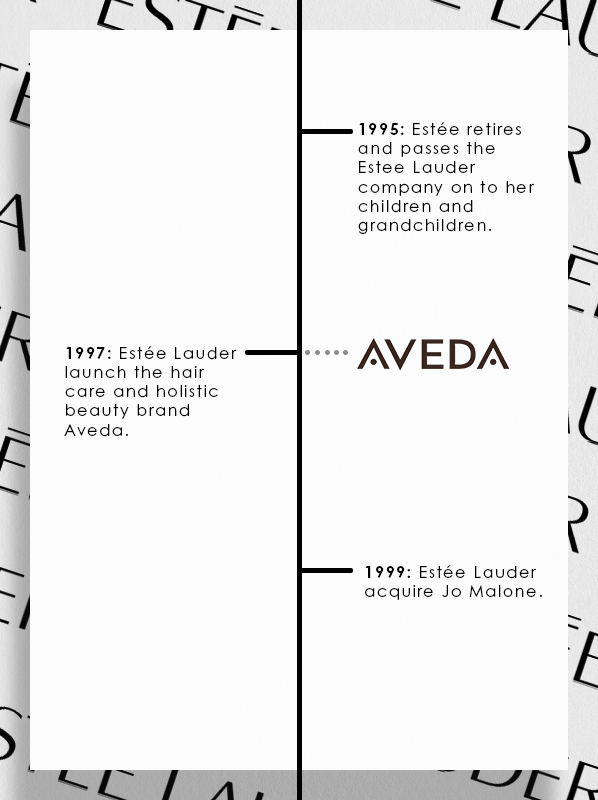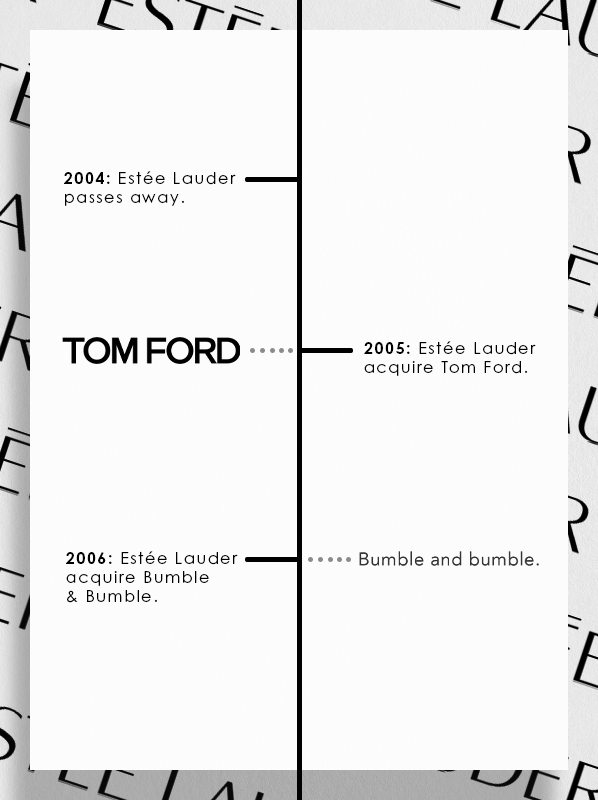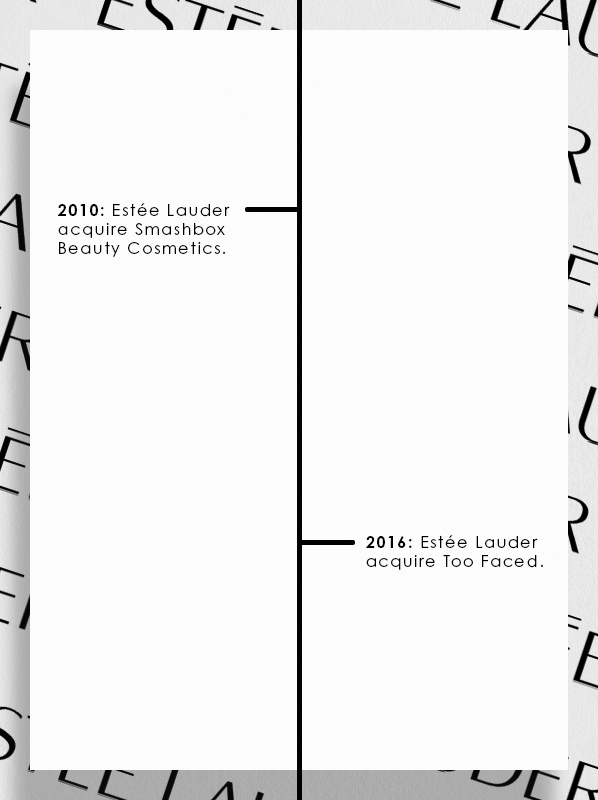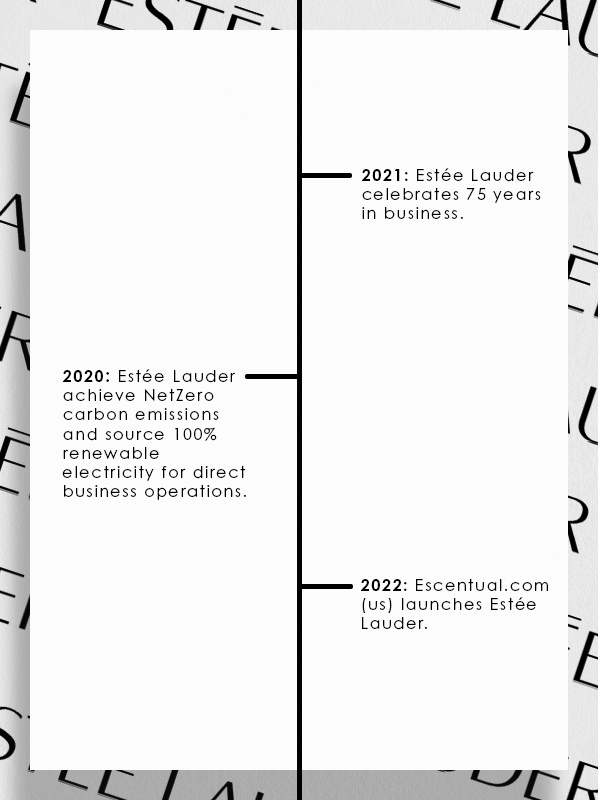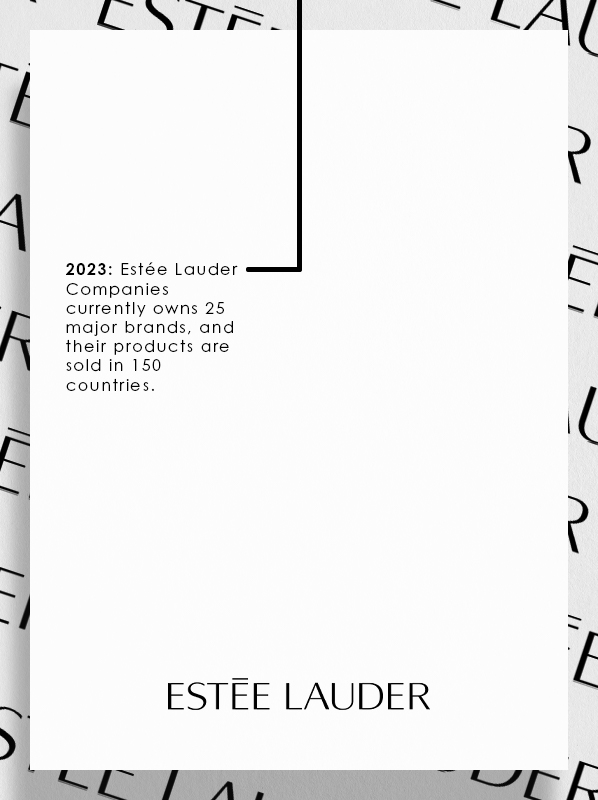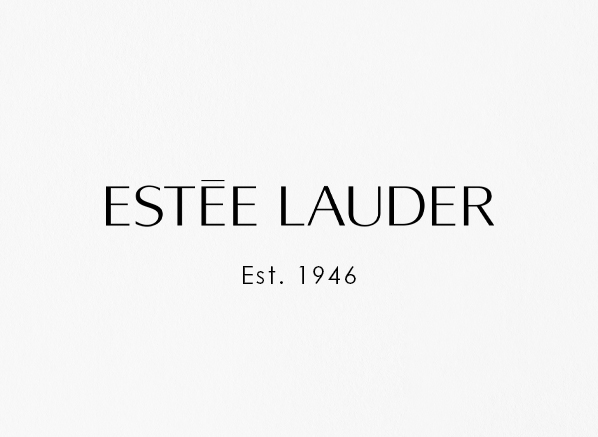

What started as four skincare formulas has grown into ‘The Estée Lauder Companies’ – a multi-branded leader in prestige beauty available in 150 countries across the globe. The company’s founder Ms Estée Lauder had a passion for beauty and its power to inspire women. She is most famous for saying, “I never dreamed about success. I worked for it.” Estée Lauder was ahead of her time; back in the 1940’s, she challenged the norms of the beauty industry and created one of the world’s most prestigious and innovative beauty companies.
Over the years, Estee Lauder has expanded its portfolio to include skincare, makeup and fragrance. Today, they own 21 global brands, including everything from the prestige men’s fragrance brand Aramis to the high-performance plant-based haircare brand Aveda.
Let’s travel back to 1930, where it all began, as we explore the timeline of Estee Lauder’s history…
1930’s: It’s All In The Name
She was born in Queens, New York by her Hungarian mother, Rose, and Czech father, Max. Estée Lauder was originally called Josephine Esther Mentzer. The name ‘Estée’ was a variation of her childhood nickname, Esty. Her passion for beauty was fuelled by her Hungarian uncle, who created skincare in her kitchen. In high school, her uncle taught her how to formulate skincare and apply it for the best results.
In the 1920s, Joseph Lauter’s father emigrated from Austria to the United States and began dating Estée. In 1930 the couple married and moved to Manhattan; they took the surname ‘Lauder’ as it corrected a spelling error from when Joseph’s father emigrated from Austria. The name ‘Estee Lauder’ was born.
1940’s: Estee Lauder Is Founded
In 1946, Estée and Joseph Lauder founded ‘Estée Lauder cosmetics. They started selling skincare (just four products) in beauty salons by demonstrating it to women while sitting under hair dryers. Estée Lauder picked the pale turquoise colour for the brand’s jars for its sense of luxury that matched bathroom decor at the time.
Two years later, Estée secured her first major department store order: $800 worth of products for the Saks Fifth Avenue department store in New York (the equivalent of $10k today). It’s rumoured that a department store once rejected Estée, so she smashed a bottle of her perfume on the floor. As customers entered the store, they began asking, ‘what is that fragrance’ and the store had to place an order.
Estée knew what women wanted; she believed you had to show her the results on her face to make a sale and explain each product. This was the start of Estee Lauder’s high-touch service. She practically invented the “Gift with Purchase”, making it a standard industry practice.
1950’s: Youth Dew Takes Off
In the 1950s, Estee Lauder became part of a pivotal turn in the beauty industry. Previously, most women kept their fragrances for special occasions; they would wait for their husband to gift them their favourite fragrance on their birthdays or anniversary. Estée introduced the idea of an everyday fragrance to women. In 1953, she created Youth-Dew, a bath oil that doubled as a skin perfume.
Decades later, the Youth Dew collection continues to captivate with its seductive blend of floral, spicy and woody notes. Its spicy-amber scent is available in an iconic Eau de Parfum and a scent-enhancing bath and body collection. Actress Dolores del Rio (The first major female Latin American actress) commented that the secret to ‘driving men gaga’ was brushing your hair with Youth Dew.
This innovation shook the cosmetics industry and helped to change the way fragrance was sold, transforming the start-up company into a multimillion-dollar business.
In 1956, Estee combined 25 of the world’s most precious ingredients to create Re-Nutriv. She believed her customers wanted to indulge themselves in the best; it sold for an unprecedented price of $115 a jar!
1960’s: Exceptional Growth
The 60’s called for international expansion, with Estee Lauder opening their first overseas account in Harrods, London.
In 1963, Estee Lauder created Aramis, the first prestige men’s fragrance sold in department stores. Aramis is named after an exotic Turkish root originally used as an aphrodisiac; their fragrance and grooming collection embodies classic masculinity and sophistication.
In 1967, Estee Lauder introduced their 24kt gold-plated alligator refillable compact. It was a must-have beauty accessory and is still sold today. Each compact became collectable with new designs each year – over the years, there have been 1700 compact designs.
One year later, Estee Lauder was awarded the Spirit of Achievement Award from the Albert Einstein College of Medicine at Yeshiva University. But her greatest honour was receiving the French Legion of Honor. Estée supported numerous civic and cultural programs and other charitable causes, including restoring the Palace of Versailles and building several playgrounds in New York City’s Central Park.
In the same year, Estée Launder partnered with Dr Norman Orentreich, a New York Dermatologist, to create Clinique. Clinique was the industry’s first allergy-tested, 100% fragrance-free skincare brand.
In 1969, Estee Lauder moved to the GM Building at 767 Fifth Avenue overlooking Central Park. Today, the office remains their global headquarters; they have even preserved Estée’s original office.
1980’s: Night Repair Is Born
In 1982, Estee Lauder launched the first ever serum in the US, ‘Night Repair’. Today, Advanced Night Repair is the UK’s best-selling premium facial serum. The likes of Stella, Marie Claire and Glamour endorse the multi-award-winning anti-ageing serum.
Two years later, Estee Lauder launched a major new scent for brides: Beautiful. Today, Beautiful continues to be a bestselling prestige fragrance. Andy Warhol was buried with a bottle.
But Estee Lauder didn’t stop at two iconic launches in the 80s. In 1987, they launched the high-performance men’s skincare brand: Lab Series. Designed, developed, and tested for men, the brand provides functional yet efficacious formulas with colour-coded packaging that makes it easy to build a regime suited to any skin type.
Near the end of the 80s, Estée paid tribute to her mother’s Hungarian heritage by opening the first-ever freestanding store in Budapest.
1990’s: Family Takeover
In the 1990’s expansion began, starting with Origins. The first wellness brand in U.S. department stores. The high-performance skincare brand combined nature and science.
The only thing more important to Estée than her Company was her family, and she was thrilled that her children and grandchildren joined the family business. In the 1990s, Estee Lauder became a publicly traded, family-controlled business. Estée’s daughter-in-law, Evelyn, launched their well-known Breast Cancer Awareness campaign in 1992. Evelyn Lauder co-created the “Pink Ribbon” as a symbol of breast health. Today, the Breast Cancer Campaign and Estée Lauder Companies Charitable Foundation have raised $118 million for lifesaving global research, education and medical services.
In 1994, Estee Lauder added MAC cosmetics to their brand portfolio. Today, MAC continues to hold a high backstage presence at over 200 fashion week shows worldwide.
Just one year later, in 1995, Estée retired and passed the company to her children. Her son, Leonard, took over with her grandson William as the Executive Chairman, and two granddaughters took senior positions within the company. The company went public on the New York Stock Exchange at a $26 share price.
But Estée’s retirement didn’t slow down expansion. In 1997, Estee Lauder launched the holistic haircare brand Aveda. As the plant-based hair and skin care leader, Aveda is trusted by millions of hair artists and salons worldwide. Today, they’re in 8000+ salons and spas worldwide. Only two years later, Estee Lauder added Jo Malone to their portfolio.
2000’s: Estee Lauder Expands
Estée Lauder passed away in 2004 at the age of 97. The company continued to grow despite her death, driven by her children and grandchildren. In 2005, the company signed Fashion Designer Tom Ford to develop and distribute fragrances and cosmetics under the Tom Ford Beauty brand. Known for their iconic Black Orchid fragrance that launched over a decade ago, to this day, Tom Ford is one of the most lusted-after luxury brands.
Just one year later, Estee Lauder acquired Bumble & bumble. A haircare brand that began as an NYC salon in 1977.
In 2010, Estee Lauder acquired Smashbox Beauty Cosmetics. The only beauty brand developed from a legendary photo studio, Smashbox has won 4 Clio Awards for their innovative digital campaigns.
Just six years later, Estee Launder launched Too Faced. Today, their Better Than Sex Mascara is the No.1 in the US. But this wasn’t the only launch in 2016; Estee Lauder also acquired the Paris-based fragrance brand, Kilian. No doubt, Estee Lauder will continue to expand over the next decade.
2020’s & Beyond: Future Plans
As we reach the end of our time covering Estee Lauder’s history, we look at the last few years and the future. In 2020, Estee Lauder achieved NetZero carbon emissions, sourcing 100% renewable energy for their direct business operations. This sustainable pledge continues. By 2025, 75%-100% of Estee Lauder’s packaging will meet at least one of the following: recyclable, refillable, recycled or recoverable. 50% of the plastic used will be recycled, and 100% of forest-based cardboard cartons will be FSC certified.
In 2021, Estee Lauder celebrated 75 years of business. Driven by the legacy of Estee and Joseph Lauder, the company has grown into one of the world’s leading prestige beauty brands.
Today, Estee Lauder owns 25+ major brands, and their products are sold in 150 countries. Estee Lauder brands each drive impact through unique cause programs, from Aveda’s mission to provide access to clean water globally to Origins’ mission to safeguard the health of forests and combat environmental degradation.
Over to you!
Do you have a question about the history of Estee Lauder that we haven’t answered? Tweet us @Escentual with your query!
Discover More:



